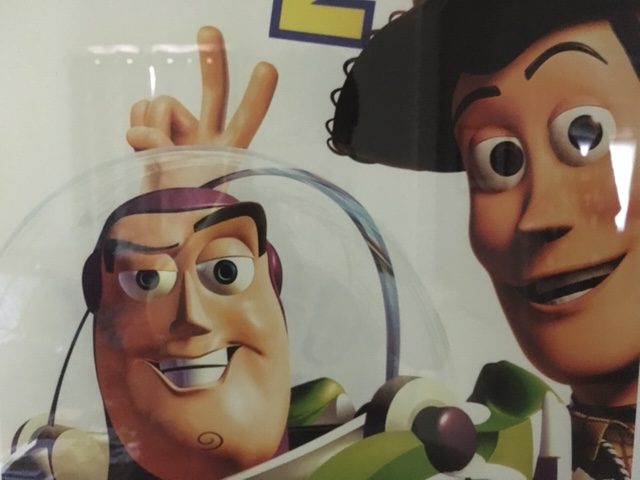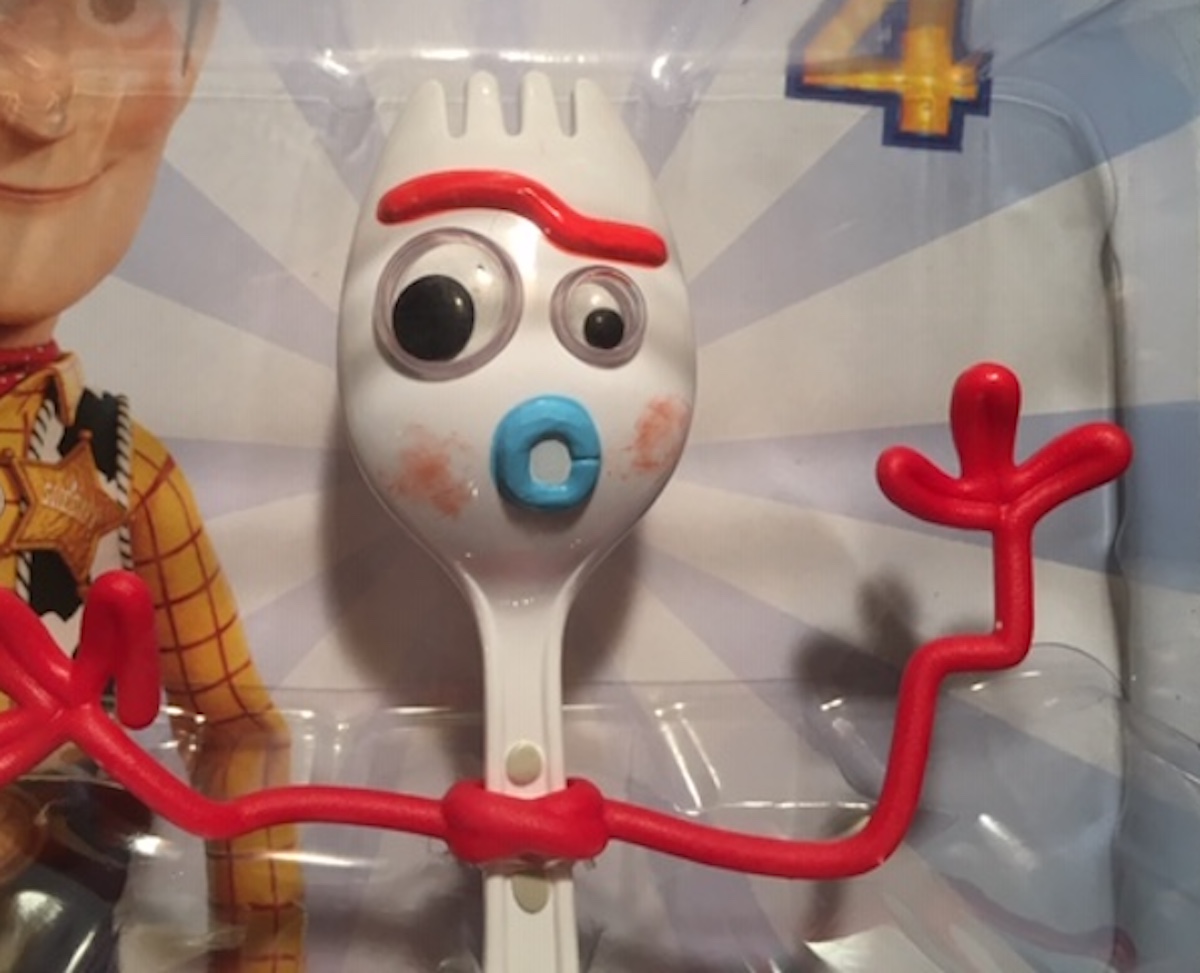You’ll find Toy Story 4 plot spoilers throughout this article.
“I am not a toy!” Forky tells Woody in Toy Story 4. “I’m a spork! I was made for soup, salad, maybe chili, and then the trash. I’m litter.” For this reason, Forky keeps trying to throw himself away, because he finds trash “comforting.”
Woody, the cowboy toy of Toy Story, tries to save Forky from this. Forky, who is made by his owner, Bonnie, from a spork and popsicle sticks, has Bonnie’s name written on his feet. This, thinks Woody, makes Forky a toy, for sure.
Cowboy-splaining ensues.
I love Toy Story 4 with a passion. I see it as Disney expanding, trying to be more inclusive, to go deeper—and not least in terms of identity. As a pansexual, non-binary person with a trans family member, I initially came to the U.S. as a British immigrant. No wonder identity is central to my life and work—including my work as a fiction writer, screenwriter, and content writer.
In Toy Story 4, Woody makes a very human mistake. He tries to define Forky based on what Woody sees as Forky’s purpose. Being created to be played with, he thinks, makes Forky a toy. Forky, however, defines himself as both trash and a spork at the start of the film, which, of course, was his previous purpose. He refuses to let Woody define him differently.
Truth is, Woody’s own toy identity is being challenged in this movie, because he, who once had the privilege of being the most important toy in the room, is no longer played with. A devastating reality.
By the end, Woody redefines what being “a toy” can mean. It’s a heroic shift. It makes me love him more than I ever have.
Toy Story 4 is animation that questions, perhaps pushing us to explore ourselves. In some ways, it’s a movie that says, “Hey! When we don’t know how to define ourselves, that’s okay. But forcing your definition onto others won’t work. You have to wait for them to find their own definition.”
X knew he was a boy when he was five, but was told that he was wrong, because society didn’t want to understand that his identity wasn’t defined by the body he had. Of course, gender, a social construct, often isn’t.
Too often, our society sees the body as a means of control: an attempt to enforce normativity and privilege.
This isn’t just about gender, of course. When I worked with blind people and received blindness sensitivity training, I was taught that automatically feeling sorry for someone because they are blind or have a visual impairment is usually oppressive—a way in which our society seeks to control what is positive/negative, healthy/not healthy, empowered/disempowered. My trainer had been blind for four years, but said she wouldn’t want her sight to return and she knew many others who felt this way. “Why would I want learn a whole new way of being,” she said, “when I’ve just taken years to learn this one?”
In terms of identity, what we feel surely trumps what we do or don’t have, because feeling and belonging are surely way more important than physicality—even when they’re seen to reflect physicality or when they are because of physicality.
When I first came out as non-binary, a cisgender woman asked me, in good faith, “Can you explain your non-binaryness to me?”
I said, “Without referring to your physical body, can you explain why you’re a woman?”
She admitted that she didn’t even know where to start. Describing the feeling of being a woman without referring to her body seemed impossible.
“Well, by asking me to explain who I am a non-binary person, that’s what you’re asking me to do,” I said. “This isn’t to do with my body.” This was to do with the difference I’d felt inside since I was a child, I added, but had no language to explain it, no way to have it received.
It turned out she thought that all physical bodies fell into the gender binary, too. That, of course, is far from true.

I wonder what Woody’s conversation with Forky would look like, if Woody accepted that Forky was who he said he was. As it happens, the point when Woody seems to give up the “toy” argument, comes when Forky realizes that he’s not just trash, he’s Bonnie’s trash.
Up until that point, the big issue for Woody has been that Forky was trying to “dispose of” himself, when Bonnie really needed him. Forky’s realization that he belongs to Bonnie solves the problem, in a way, because Forky wants to get back to Bonnie, rather than leaving her.
Forky wants to be hers.
As I think Toy Story 4 understands, the interesting shifts happen when we tell Forky, “Okay. I hear you. You’re Bonnie’s trash,” and we fix our own perception. But to do that, we have to feel secure in our own identities, which, at this point in the film, Woody doesn’t. While Forky eventually decides he is a toy, it takes Woody a while to see that he, himself, isn’t less of a toy just because his owner no longer plays with him.
At the end of the movie (yup, I’m giving that away in these final paragraphs), Woody eventually joins a new team and chooses a new identity as a toy who helps ownerless toys that long to be owned to find an owner. In a team of other toy “activists,” (my choice of word,) he begins to see that other toys count in his life just as much as his kid owners have. He learns that just because Bonnie doesn’t need him doesn’t mean that others don’t.
It’s true that when Forky meets his great love, a knife/toy who identifies as trash, he takes Woody’s role by telling her she’s a toy. I admit, it’s not my favorite moment. But perhaps that scene is saved for me by her genius response, which blows Forky’s mind.
“Why am I alive?”
And that’s another story.
You can watch Toy Story 4 as a Disney+ subscriber, on Amazon Prime, and elsewhere. You can also buy art (like the print I featured above) from Disney Art.


